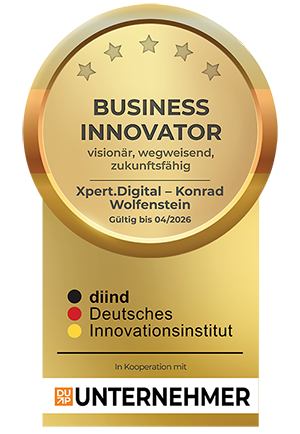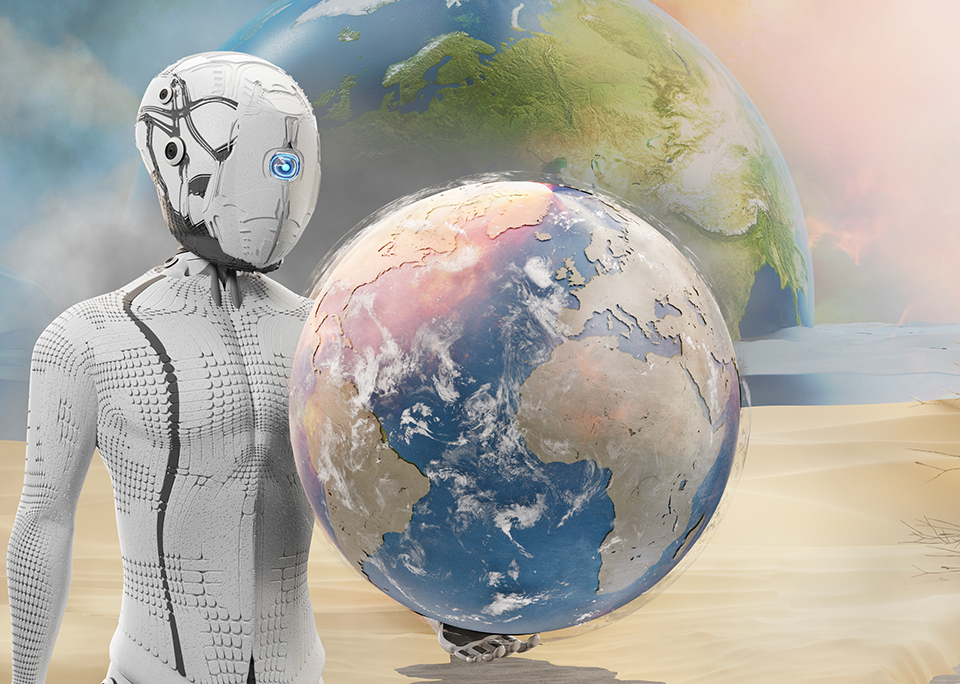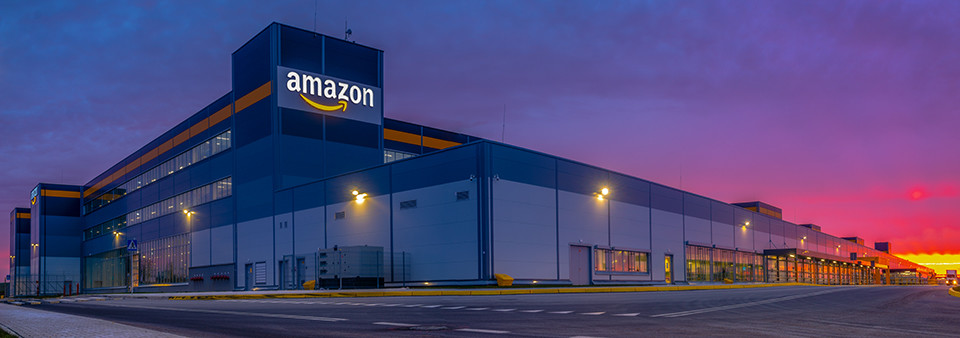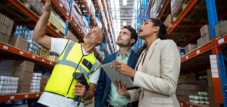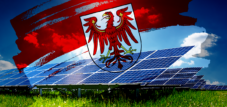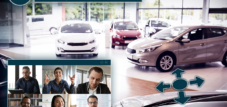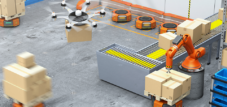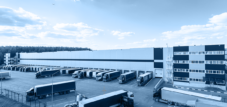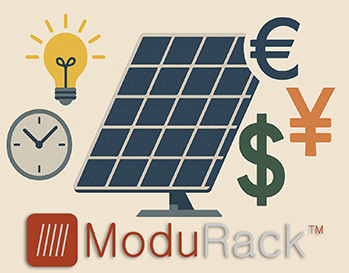CO2 Neutralität mit Photovoltaik – Von Amazon Logistics lernen – CO2 Neutrality with Photovoltaics – Learning from Amazon Logistics
Sprachauswahl 📢
Veröffentlicht am: 17. August 2020 / Update vom: 14. September 2021 – Verfasser: Konrad Wolfenstein
Switch to english version
In der Intralogistik, Logistik, Maschinenbau und dem produzierenden Gewerbe
Manch einer sieht im Europäischen Klimagesetz (European Green Deal) einen weiteren Versuch der EU, in der Bevormundung oder gar Gängelung seiner Bürger. Jedoch wissen nur wenige, dass es hierbei eigentlich um Planungssicherheit und Transparenz für Industrie und Investoren geht, um eine grüne Wachstumstrategie zu gewährleisten. Es ist ein ambioniertes Ziel der EU, bis 2050 das erste klimaneutrale Kontinent auf der Welt zu werden.
Es geht aber auch anders und es gibt auch andere Gründe, die sich lohnen darüber Gedanken zu machen. Beim Onlineversandhändler Amazon sind in den letzten zehn Jahren die Versand- und Fulfillmentkosten in die Höhe geschossen: Die gesamten Logistikkosten zwischen 2009 und 2019 waren um mehr als das 20-fache gestiegen.
- Allein im letzten Jahr beliefen sich die Versandkosten des Unternehmens auf 37,9 Milliarden Dollar.
- Mit den Fulfillmentkosten (z.B. Kosten für den Betrieb und die personelle Besetzung von Fulfillment-Zentren) fügen sich weitere 40,2 Milliarden Dollar zu einer saftigen Logistikrechnung hinzu.
- Obwohl die Einnahmen von Amazon seit 2009 ebenfalls um mehr als das Zehnfache gestiegen sind, reichte das nicht aus, um den Anstieg der Logistikkosten auszugleichen. Im Jahr 2009 beliefen sich die Versand- und Fulfillmentkosten auf 15,6 Prozent des Nettoumsatzes.
Bis 2019 war dieser Anteil auf 27,9 Prozent gestiegen.
Wettbewerbsfähigkeit und die Eroberung von Marktanteilen hat nun mal seinen Preis. Daher überlässt Amazon nichts dem Zufall. Amazon ist nicht nur Spitzenreiter in den Forschungsausgaben, es investiert auch in den Ausbau seiner Robotik. Die Robotik ist nicht nur schneller und leistungsfähiger, sie ist auch weniger fehleranfällig und zuverlässiger. Die Idee dahinter: Je höher der Anteil der Automatisierung durch die Robotik, desto geringer der Anteil ihrer Personalkosten und desto niedriger die Vorteile billig verfügbarer Arbeitskräfte.
Auch im Bereich der Photovoltaik hat Amazon ebenfalls beeindruckende Fortschritte gemacht und ist in nur fünf Jahren von null auf fast 330 Megawatt Energieleistung gestiegen. Dieses Jahr wird noch eine Solarfarm von 45 MW in Virginia fertiggestellt und soll jährlich 100.000 Megawatt sauberen Strom liefern. Aktuell sind Solarparks in Sevilla (Spanien) mit 149 MW, in Lee County, Illinois (100 MW) und in Northern Virginia (80 MW) geplant.
In den USA stand Amazon 2018 auf Platz 1 für die Anzahl der installierten Solaranlagen und auf Platz 2 für die insgesamt bis dato installierten Solaranlagen.
Weltweit verfügt Amazon nun über 70 Projekte (21 Wind- und Solarparks sowie 50 Solaranlagen auf Logistikzentren) der erneuerbaren Energien, mit einer Kapazität von schätzungsweise insgesamt 1.900 MW, die jährlich 5,3 Millionen Megawattstunden (MWH) klimaneutralen Strom bereitstellen.
Das sind beachtliche Zahlen! Aber es zeigt einmal mehr, dass Amazon für die Zukunft, für den Ausbau seiner Marktdominanz neben
- Robotik und
- Automatisierung
auf
- Autonome Stromversorgung (CO2 Neutralität)
setzt.
Hierbei steht nicht die Grüne Intralogistik, Nachhaltigkeit, CO2 Reduktion und Dekarbonisierung im Vordergrund – es ist in der noch jungen Dekade vor allem für die Vermarktung als Vorreiter im Bereich Umweltschutz ein bedeutender und marketingtechnisch positiver Nebeneffekt. Mehr aber auch nicht.
Es geht um die in Zukunft einhergehenden höheren Kosten für Umweltschutzauflagen, Stromspitzen (Infrastruktur und Netzstabilität) und CO2-Bilanz.
Die CO2-Bilanz, auch Treibhausgasbilanz oder CO2-Fußabdruck genannt, wird in Zukunft mehr an entscheidenden Einfluss gewinnen, wenn es in der CO2-Kennzeichnung von Waren und Dienstleistungen steuerliche wie kostentechnische Aufschläge erfährt.
Index zur Entwicklung des Industriestrompreises in Deutschland in den Jahren 1998 bis 2021 (1998 = Index 100). Prognose ab 2021 bis 2030 in verschiedenen Szenarien.
Die Statistik zeigt den Index zur Entwicklung des Industriestrompreises in Deutschland in den Jahren 1998 bis 2021. Ausgehend vom Jahr 1998 (Indexwert = 100) betrug der Indexwert zur Entwicklung des Industriestrompreises in Deutschland im Jahr 2021 195 Punkte.
Die Angaben beziehen sich auf die mittelspannungsseitig versorgte Industrie mit einem Jahresstromverbrauch von 160 bis 20.000 Megawattstunden.
Nach Beschlüssen zu Kohleausstieg und Klimaschutzgesetz 2019 werden die Strompreise bis 2030 voraussichtlich um ca. 40 % steigen.
Passend dazu:
- Strom-Eigenverbrauchsoptimierung: Was in allen Finanzierungsmodellen übersehen wird
- Hintergrundwissen zu Erdöl, CO2-Steuer und erneuerbare Energien
Shipment Zero
So schreibt Amazon in seinem Blog: “Allein im Betrieb haben wir über 200 Wissenschaftler, Ingenieure und Produktdesigner, die sich ausschließlich damit beschäftigen, neue Wege zu finden, um unsere Größe zum Wohle der Kunden und des Planeten zu nutzen. Amazon hat das langfristige Ziel, seine globale Infrastruktur zu 100% mit erneuerbarer Energie zu versorgen, und wir machen dabei solide Fortschritte. Mit Verbesserungen bei Elektrofahrzeugen, Biokraftstoffen für die Luftfahrt, wiederverwendbaren Verpackungen und erneuerbaren Energien können wir nun zum ersten Mal einen Weg zu einer klimaneutralen Lieferung von Sendungen an Kunden sehen, und wir setzen uns das ehrgeizige Ziel, mit 50 % Klimaneutralität aller Amazon-Lieferungen bis 2030 zu erreichen. Wir nennen dieses Projekt Shipment Zero.“
Es wäre zu kurz gedacht, wenn wir annehmen würden, dass Amazon als moralischer Vorreiter für eine grüne Zukunft all die Mühen und Investitionen leistet. 200 Wissenschaftler, Ingenieure und Produktdesigner sind nicht dazu da, um eine grüne Zukunft vorzuleben, sondern den Umsatz und den Gewinn des Unternehmens zu sichern und zu steigern, Kosten zu reduzieren, wo es geht, um so die Marktstellung für die Zukunft zu sichern und auszubauen.
Hierbei setzt Amazon auf 2 Säulen:
- Automatisierung mit Hilfe von Digitalisierung (Digitale Transformation), Smart Technology (vor allem Smart Factory), Internet of Things und Industrie 4.0.
- Autonomie in der Stromversorgung (CO2 Neutralität), die eigene Unabhängigkeit und Energieeffizienz steigern, Klimaneutralität
Photovoltaik ist autonome Stromversorgung
Sinkende Installationskosten und staatliche Förderprogramme haben die Akzeptanz und Skalierbarkeit von Solar als praktische Energiequelle für Unternehmen gefördert. Da die Kosten weiter sinken, wird erwartet, dass die Akzeptanzraten der Unternehmen steigen werden, was diesen korrelativen Trend fortsetzt.
Der Bundesverband Erneuerbare Energie BEE geht davon aus, dass Solarenergie bis 2030 in Deutschland mit 100 Gigawatt (GW) die größte installierte Kapazität der Erneuerbaren haben wird. Auf Platz zwei und drei folgen die Windkraftanlagen (On- & Offshore) mit 59 GW und Bioenergie mit 6 GW. Wasserkraft und Geothermie teilen sich Platz vier mit jeweils 0,5 GW.
Photovoltaik ist gerade zu prädestiniert für das produzierende Gewerbe, Maschinenbau und Logistik, mit seinen großen Flächen und Hallen.
Industrie-Netzwerk
Man muss nicht Amazon sein und die Weichenstellung mit dem European Green Deal durch die EU-Kommission und ihrer Präsidentin Ursula von der Leyen sind ein starkes Signal für die europäische Wirtschaft.
Jetzt liegt es an uns, die verschiedenen Kompetenzen aus
- Intralogistik,
- Photovoltaik und
- Digitale Transformation
zusammenzubringen.
Vor allem die deutsche Wirtschaft hat die besten Voraussetzungen hierfür. Jetzt gilt es, das Know-how zu nutzen und gemeinsam mit Europa den Wirtschafts- und Wettbewerbsvorteil aufzuholen und auszubauen.
In Intralogistics, Logistics, Mechanical Engineering and the Manufacturing Industry
Some see the European Green Deal as another attempt by the EU to patronise or even repress its citizens. However, few know that this is actually about the planning security and transparency for industry and investors to ensure a green growth strategy. It is an ambitious goal of the EU to be the world’s first climate neutral continent by 2050.
But there are other ways to approach this, and there are plenty of other reasons worth thinking about. Shipping and fulfillment costs at the online retailer Amazon have skyrocketed in the last ten years: The total logistics costs between 2009 and 2019 had risen more than 20 times.
- Last year alone, the company’s shipping costs amounted to 37.9 billion dollars.
- Fulfillment costs (e.g. costs for the operation and staffing of fulfillment centers) add another 40.2 billion dollars to a huge logistics bill.
- Although Amazon’s revenues have also increased by more than ten times since 2009, this was not enough to compensate for the increase in logistics costs. In 2009, shipping and fulfillment costs amounted to 15.6% of net sales.
By 2019, this share had risen to 27.9 percent.
After all, competitiveness and the conquest of market shares has its price. Therefore, Amazon doesn’t leave anything to chance. Amazon is not only the world leader in research spending, it is also investing in the expansion of its robotics. Robotics is not only faster and more powerful, but also less prone to errors and more reliable. The idea behind it: The higher the level of automation provided by robotics, the lower the proportion of their staff costs and the lower the benefits of cheaply available workers.
Amazon has also made impressive progress in the field of photovoltaics, rising from zero to almost 330 megawatts of energy output in just five years. This year, a 45 MW solar farm will be completed in Virginia and is expected to provide 100,000 megawatts of clean electricity annually. Further solar parks have been planned in Seville (Spain) with 149 MW, in Lee County, Illinois (100 MW) and in Northern Virginia (80 MW).
In the USA (2018), Amazon ranked first for the number of solar plants installed and second for the total number of solar plants installed to date.
Amazon now operates 70 renewable energy projects worldwide (21 wind and solar parks and 50 solar parks on logistics centres), with an estimated total capacity of 1,900 MW, providing 5.3 million megawatt hours (MWH) of climate-neutral electricity annually.
These are remarkable numbers! But this shows once again that Amazon is not only counting on
- robotics and
- automation
for the expansion of its market leadership in the future, but also on
- autonomous power supply.
The focus here is not on green intralogistics, sustainability, CO2 reduction and decarbonisation – in this still relatively new era it is a significant positive side effect being able to market itself as a pioneer in the field of environmental protection. But that’ s all it is.
Actually, it is about the costs of environmental protection requirements, power peaks (infrastructure and grid stability) and CO2 Balance, which will most likely increase in the future.
In the future, the CO2 Balance, also known as the Greenhouse Gas Balance or CO2 Footprint, will gain more of a decisive influence when the CO2 labelling of goods and services will be subject to tax and cost-related surcharges.
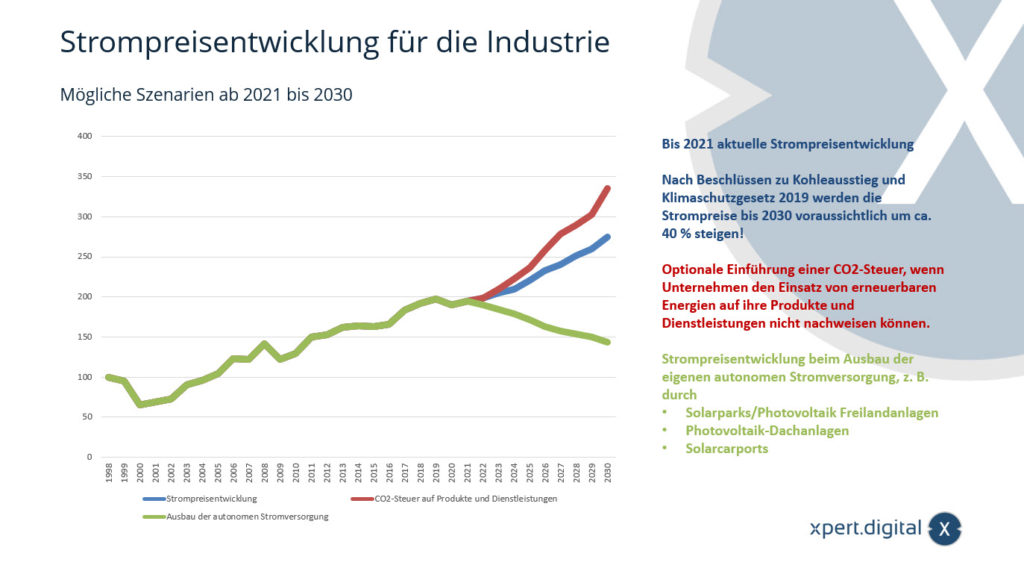
Electricity price development for industry – Possible scenarios from 2021 to 2030 – Image: Xpert.Digital
Index for the development of the industrial electricity price in Germany from 1998 to 2021 (1998 = index 100). Forecast from 2021 to 2030 in various scenarios.
The statistics show the index for the development of the industrial electricity price in Germany in the years 1998 to 2021. Starting from 1998 (index value = 100), the index value for the development of the industrial electricity price in Germany in 2021 was 195 points.
The figures relate to medium-voltage supplied industry with an annual electricity consumption of 160 to 20,000 megawatt hours.
Following decisions on coal phase-out and climate protection legislation in 2019, electricity prices are expected to rise by around 40% by 2030.
More information:
- Electricity self-consumption optimization: what is overlooked in all financing models
- Background knowledge on oil, CO2 tax and renewable energies
Shipment Zero
This is what Amazon writes in their blog: “In operations alone, we have over 200 scientists, engineers, and product designers dedicated exclusively to inventing new ways to leverage our scale for the good of customers and the planet. Amazon has a long-term goal to power our global infrastructure using 100% renewable energy, and we are making solid progress. With improvements in electric vehicles, aviation bio fuels, reusable packaging, and renewable energy, for the first time we can now see a path to net zero carbon delivery of shipments to customers, and we are setting an ambitious goal for ourselves to reach 50% of all Amazon shipments with net zero carbon by 2030. We are calling this project Shipment Zero.”
It would be short-sighted to assume that Amazon is making all the effort and investment as a moral leader for a green future. 200 scientists, engineers and product designers are not there to set an example for a green future, but to secure and increase the company’s sales and profits, to reduce costs where possible, and to ensure and expand the market position for the future.
Here Amazon relies on 2 principles:
- Automation with the help of digitalization (Digital Transformation), Smart Technology (especially Smart Factory), Internet of Things and Industry 4.0.
- Autonomy in power supply, increase of the own independence and energy efficiency, climate neutrality.
Photovoltaics is an Autonomous Power Supply
Decreasing installation costs and government subsidy programs have promoted the acceptance and scalability of solar as a practical energy source for companies. As costs continue to decrease, it is expected that company acceptance rates will increase, continuing this correlative trend.
The German Renewable Energy Federation (BEE) assumes that solar energy will have the largest installed renewable energy capacity in Germany by 2030, at 100 gigawatts (GW). In second and third place are wind turbines (onshore and offshore) with 59 GW and bioenergy with 6 GW. Hydropower and geothermal energy share fourth place with 0.5 GW each.
Photovoltaics is just perfect for the manufacturing industry, engineering and logistics, with its large areas and halls.
Industry Network
There is no need to be Amazon and the course set with the European Green Deal by the EU Commission and its President Ursula von der Leyen, is a strong signal for the European economy.
Now it is up to us to combine the skills of:
- Intralogistics,
- Photovoltaics, and
- Digitale Transformation
Particularly the German economy has the best conditions for this. Now is the time to use the know-how and, together with Europe, to catch up and expand the economic and competitive advantage.
► Kontaktieren Sie mich oder diskutieren Sie mit mir auf LinkedIn
Für die Zukunft wird entscheidend sein, wie wir die Infrastruktur unserer Schlüsselindustrien sichern!
Hierbei bekommen drei Bereiche einer besonderen Bedeutung zu:
- Digital Intelligence (Digitale Transformation, Internet Access, Industrie 4.0 und Internet of Things)
- Autonome Stromversorgung (CO2 Neutralität, Planungssicherheit, Sicherheit für die Umwelt)
- Intralogistik/Logistik (Voll-Automatisierung, Mobilität von Gütern und Menschen)
Xpert.Digital liefert Ihnen hier aus der Smart AUDA Reihe
- Autonomisierung der Energieversorgung
- Urbanisierung
- Digitale Transformation
- Automatisierung der Prozesse
immer wieder neue Informationen, die regelmäßig aktualisiert werden.

